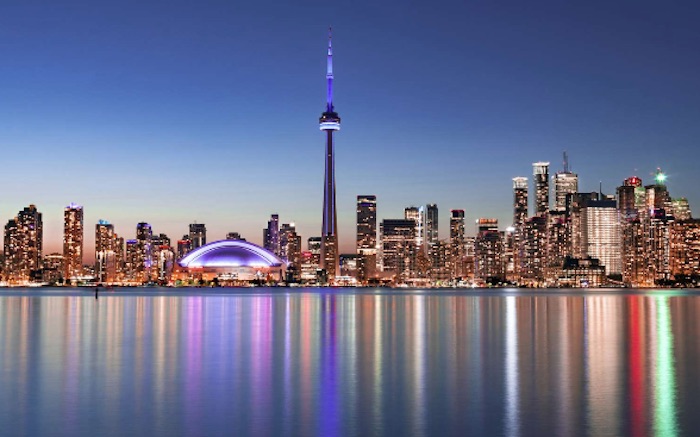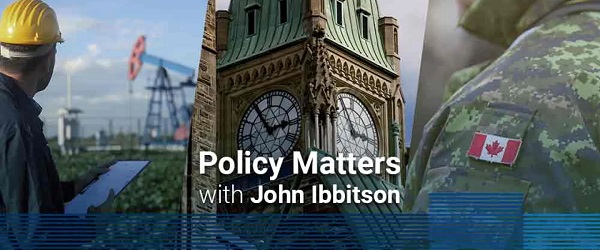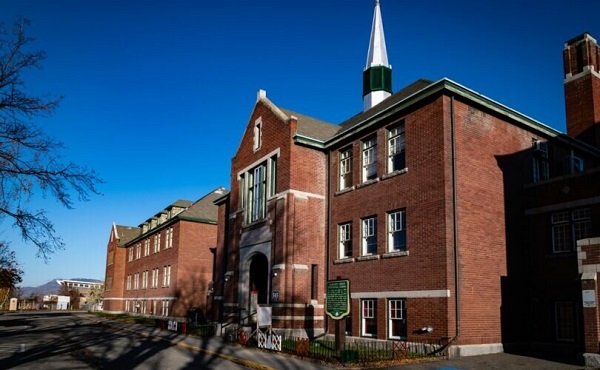Economy
Toronto, Vancouver named “Impossibly Unaffordable”

From the Frontier Centre for Public Policy
Two Canadian cities — Toronto and Vancouver — have earned the title of “impossibly unaffordable” in a new report.
“There has been a considerable loss of housing affordability in Canada since the mid-2000s, especially in the Vancouver and Toronto markets,” according to the Demographia International Housing Affordability report, which is released annually.
“During the pandemic, the increase in remote work (working at home) fuelled a demand increase as many households were induced to move from more central areas to suburban, exurban and even more remote areas. The result was a demand shock that drove house prices up substantially, as households moved to obtain more space, within houses and in yards or gardens.”
Vancouver was the least affordable market in Canada, and the third least affordable out of all of the 94 markets observed in the report. The West Coast city’s affordability issue has “troublingly” spread to smaller areas like Chilliwack, the Fraser Valley, Kelowna, and markets on Vancouver Island, per the report.
Toronto was named as the second least affordable market in Canada. However, it fared slightly better than Vancouver when it came to the other markets, ranking 84 out of 94 in international affordability.
“As in Vancouver, severely unaffordable housing has spread to smaller, less unaffordable markets in Ontario, such as Kitchener-cambridge-waterloo, Brantford, London, and Guelph, as residents of metro Toronto seek lower costs of living outside the Toronto market,” the report says.
The findings of the report have “grave implications on the prospects for upward mobility,” said Joel Kotkin, the director at the Center for Demographics and Policy at Chapman University, a co-publisher of the report along with Canada’s Frontier Centre for Public Policy.
“As with any problem, the first step towards a resolution should be to understand the basic facts,” he said. “This is what the Demographia study offers.”
The report looked at housing affordability in 94 metropolitan areas in Australia, China, Ireland, New Zealand, Singapore, the United Kingdom, the United States and Canada. The data analyzed was taken from September 2023. The ratings are based on five categories (affordable, moderately unaffordable, seriously unaffordable, severely unaffordable, and impossibly unaffordable) with a points system to classify each area.
The report determined affordability by calculating the median price-to-income ratio (“median multiple”) in each market.
“There is a genuine need to substantially restore housing affordability in many markets throughout the covered nations,” said Frontier Centre for Public Policy president Peter Holle, in a statement. “In Canada, policymakers are scrambling to ‘magic wand’ more housing but continue to mostly ignore the main reason for our dysfunctional costly housing markets — suburban land use restrictions.”
Toronto and Vancouver both received the worst possible rating for affordability, making them stand out as the most expensive Canadian cities in which to buy a home. However, other Canadian markets — like Calgary, Montreal and Ottawa-gatineau — stood out as well. They were considered “severely unaffordable.”
“This is a long time coming,” senior economist with the Canadian Centre for Policy Alternatives David Macdonald told CTV News.
“We haven’t been building enough housing, we certainly haven’t had enough government investment in affordable housing for decades, and the chickens are coming home to roost.”
The most affordable Canadian city in the report was Edmonton, which was given a rating of “moderately unaffordable.” The city in Alberta was “at least twothirds more affordable” than Vancouver.
Overall, Canada ranked third in home ownership compared to the other regions observed in the report. The highest home ownership rate was in Singapore, at 89 per cent, followed by Ireland, at 70 per cent. In Canada, the rate was 67 per cent.
First published in the National Post here, June 17, 2024.
Business
Most Canadians say retaliatory tariffs on American goods contribute to raising the price of essential goods at home

- 77 per cent say Canada’s tariffs on U.S. products increase the price of consumer goods
- 72 per cent say that their current tax bill hurts their standard of living
A new MEI-Ipsos poll published this morning reveals a clear disconnect between Ottawa’s high-tax, high-spending approach and Canadians’ level of satisfaction.
“Canadians are not on board with Ottawa’s fiscal path,” says Samantha Dagres, communications manager at the MEI. “From housing to trade policy, Canadians feel they’re being squeezed by a government that is increasingly an impediment to their standard of living.”
More than half of Canadians (54 per cent) say Ottawa is spending too much, while only six per cent think it is spending too little.
A majority (54 per cent) also do not believe federal dollars are being effectively allocated to address Canada’s most important issues, and a similar proportion (55 per cent) are dissatisfied with the transparency and accountability in the government’s spending practices.
As for their own tax bills, Canadians are equally skeptical. Two-thirds (67 per cent) say they pay too much income tax, and about half say they do not receive good value in return.
Provincial governments fared even worse. A majority of Canadians say they receive poor value for the taxes they pay provincially. In Quebec, nearly two-thirds (64 per cent) of respondents say they are not getting their money’s worth from the provincial government.
Not coincidentally, Quebecers face the highest marginal tax rates in North America.
On the question of Canada’s response to the U.S. trade dispute, nearly eight in 10 Canadians (77 per cent) agree that Ottawa’s retaliatory tariffs on American products are driving up the cost of everyday goods.
“Canadians understand that tariffs are just another form of taxation, and that they are the ones footing the bill for any political posturing,” adds Ms. Dagres. “Ottawa should favour unilateral tariff reduction and increased trade with other nations, as opposed to retaliatory tariffs that heap more costs onto Canadian consumers and businesses.”
On the issue of housing, 74 per cent of respondents believe that taxes on new construction contribute directly to unaffordability.
All of this dissatisfaction culminates in 72 per cent of Canadians saying their overall tax burden is reducing their standard of living.
“Taxpayers are not just ATMs for government – and if they are going to pay such exorbitant taxes, you’d think the least they could expect is good service in return,” says Ms. Dagres. “Canadians are increasingly distrustful of a government that believes every problem can be solved with higher taxes.”
A sample of 1,020 Canadians 18 years of age and older was polled between June 17 and 23, 2025. The results are accurate to within ± 3.8 percentage points, 19 times out of 20.
The results of the MEI-Ipsos poll are available here.
* * *
The MEI is an independent public policy think tank with offices in Montreal, Ottawa, and Calgary. Through its publications, media appearances, and advisory services to policymakers, the MEI stimulates public policy debate and reforms based on sound economics and entrepreneurship.
Business
Trump confirms 35% tariff on Canada, warns more could come

Quick Hit:
President Trump on Thursday confirmed a sweeping new 35% tariff on Canadian imports starting August 1, citing Canada’s failure to curb fentanyl trafficking and retaliatory trade actions.
Key Details:
- In a letter to Canadian Prime Minister Mark Carney, Trump said the new 35% levy is in response to Canada’s “financial retaliation” and its inability to stop fentanyl from reaching the U.S.
- Trump emphasized that Canadian businesses that relocate manufacturing to the U.S. will be exempt and promised expedited approvals for such moves.
- The administration has already notified 23 countries of impending tariffs following the expiration of a 90-day negotiation window under Trump’s “Liberation Day” trade policy.
Diving Deeper:
President Trump escalated his tariff strategy on Thursday, formally announcing a 35% duty on all Canadian imports effective August 1. The move follows what Trump described as a breakdown in trade cooperation and a failure by Canada to address its role in the U.S. fentanyl crisis.
“It is a Great Honor for me to send you this letter in that it demonstrates the strength and commitment of our Trading Relationship,” Trump wrote to Prime Minister Mark Carney. He added that the tariff response comes after Canada “financially retaliated” against the U.S. rather than working to resolve the flow of fentanyl across the northern border.
Trump’s letter made clear the tariff will apply broadly, separate from any existing sector-specific levies, and included a warning that “goods transshipped to evade this higher Tariff will be subject to that higher Tariff.” The president also hinted that further retaliation from Canada could push rates even higher.
However, Trump left the door open for possible revisions. “If Canada works with me to stop the flow of Fentanyl, we will, perhaps, consider an adjustment to this letter,” he said, adding that tariffs “may be modified, upward or downward, depending on our relationship.”
Canadian companies that move operations to the U.S. would be exempt, Trump said, noting his administration “will do everything possible to get approvals quickly, professionally, and routinely — In other words, in a matter of weeks.”
The U.S. traded over $762 billion in goods with Canada in 2024, with a trade deficit of $63.3 billion, a figure Trump called a “major threat” to both the economy and national security.
Speaking with NBC News on Thursday, Trump suggested even broader tariff hikes are coming, floating the idea of a 15% or 20% blanket rate on all imports. “We’re just going to say all of the remaining countries are going to pay,” he told Meet the Press moderator Kristen Welker, adding that “the tariffs have been very well-received” and noting that the stock market had hit new highs that day.
The Canadian announcement is part of a broader global tariff rollout. In recent days, Trump has notified at least 23 countries of new levies and revealed a separate 50% tariff on copper imports.
“Not everybody has to get a letter,” Trump said when asked if other leaders would be formally notified. “You know that. We’re just setting our tariffs.”
-

 COVID-1921 hours ago
COVID-1921 hours agoFDA requires new warning on mRNA COVID shots due to heart damage in young men
-

 Business19 hours ago
Business19 hours agoCarney’s new agenda faces old Canadian problems
-

 Daily Caller16 hours ago
Daily Caller16 hours agoBlackouts Coming If America Continues With Biden-Era Green Frenzy, Trump Admin Warns
-

 Indigenous20 hours ago
Indigenous20 hours agoInternal emails show Canadian gov’t doubted ‘mass graves’ narrative but went along with it
-

 Bruce Dowbiggin22 hours ago
Bruce Dowbiggin22 hours agoEau Canada! Join Us In An Inclusive New National Anthem
-

 Business2 days ago
Business2 days agoCBC six-figure salaries soar
-

 Addictions2 days ago
Addictions2 days agoCan addiction be predicted—and prevented?
-

 Addictions2 days ago
Addictions2 days agoMore young men want to restrict pornography: survey



